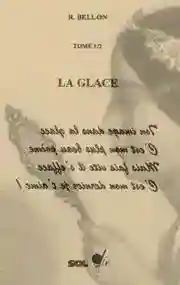Persian love poem
آینه
تصوير تو در آينه
زيباترين شعر منه
ولي زود باش چون محو مي شه
اين آخرين دوستت دارمه

Old Persian cuneiform
𐎠𐎹𐎴𐏃
𐎫𐎿𐎺𐎹𐎼𐏐𐎫𐎺𐏐𐎭𐎼𐏐𐎠𐎹𐎴𐏃
𐏀𐎹𐎲𐎠𐎫𐎼𐎹𐎴𐏐𐏁𐎠𐎼𐏐𐎶𐎴𐏃
𐎺𐎾𐎹𐏐𐏀𐎺𐎭𐏐𐎲𐎠𐏁𐏐𐎨𐎺𐎴𐏐𐎶𐏃𐎺𐏐𐎶𐎹𐏐𐏁𐏃
𐎠𐎹𐎴𐏐𐎠𐎧𐎼𐎹𐎴𐏐𐎭𐎺𐎿𐎫𐎫𐏐𐎭𐎠𐎼𐎶𐏃
Inscriptional Pahlavi
𐭠𐭩𐭭𐭤
𐭲𐭰𐭥𐭩𐭥 𐭲𐭥 𐭣𐭥 𐭠𐭩𐭭𐭤
𐭦𐭩𐭡𐭠𐭲𐭥𐭩𐭭 𐭱𐭥𐭥 𐭬𐭭𐭤
𐭥𐭫𐭩 𐭦𐭥𐭣 𐭡𐭠𐭱 𐭲𐭱𐭥𐭭 𐭬𐭧𐭥 𐭬𐭩 𐭱𐭤
𐭠𐭩𐭭 𐭠𐭧𐭥𐭩𐭭 𐭣𐭥𐭮𐭲𐭲 𐭣𐭠𐭥𐭬𐭤
Psalter Pahlavi
𐮀𐮈𐮌𐮄
𐮑𐮏𐮅𐮈𐮅 𐮑𐮅 𐮃𐮅 𐮀𐮈𐮌𐮄
𐮆𐮈𐮁𐮀𐮑𐮅𐮈𐮌 𐮐𐮅𐮅 𐮋𐮌𐮄
𐮅𐮊𐮈 𐮆𐮅𐮃 𐮁𐮀𐮐 𐮑𐮐𐮅𐮌 𐮋𐮇𐮅 𐮋𐮈 𐮐𐮄
𐮀𐮈𐮌 𐮀𐮇𐮅𐮈𐮌 𐮃𐮅𐮍𐮑𐮑 𐮃𐮀𐮅𐮋𐮄
Manichaean script
𐫀𐫏𐫗𐫆
𐫤𐫝𐫇𐫏𐫡 𐫤𐫇 𐫅𐫡 𐫀𐫏𐫗𐫆
𐫉𐫏𐫁𐫀𐫤𐫡𐫏𐫗 𐫢𐫙𐫡 𐫖𐫗𐫆
𐫇𐫓𐫏 𐫉𐫇𐫅 𐫁𐫀𐫢 𐫤𐫢𐫇𐫗 𐫖𐫍𐫇 𐫖𐫏 𐫢𐫆
𐫀𐫏𐫗 𐫀𐫍𐫡𐫏𐫗 𐫅𐫇𐫘𐫤𐫤 𐫅𐫀𐫡𐫖𐫆
A romanization
Aineh
Tasvir tho der aineh
Zebatrian share manne
Wali zood bash chun maho mee sheh
Ain aakhreen dostet darmeh

→ French poem ←
Farsi language and history
These Iranian verses (Persian, Farsi, Parsi), will be understood by 80 million people in Iran, Afghanistan, Uzbekistan, Tajikistan. Through the mirror, the Persian reflection of the charms of Persia, are in the 4 verses of this farsi love poem (شعر عاشقانه).
The Farsi language is the most important of the living languages of the Iranian branch. It is written from right to left with an Arabic alphabet. The form practiced in Tehran tends to erase dialectal differences. The dari which is the official language in Afghanistan, presents some notable differences with the Persian, but the literary language is substantially the same.
Around -600, Old Persian, the language of the Achaemenid Empire, began to evolve into the form of the Middle Iranian, the Palavi (Parthian language), borrowing from Parthian and Sogdian. Added to this is the absorption of the Arabic vocabulary, after the Arab conquest. Modern Persian will broadcast to Tajikistan and Afghanistan.
Old Persian, the language of Cyrus' empire was written in cuneiform. Middle Persian, developed during the Sassamid dynasty. Called Pahlavi, it was written with an Aramaic alphabet. Later Persia was conquered by the Arbes and then by the Seljuks. Persian was also the language of the Mughal Empire which reigned over India for 3 centuries until 1857. Today Farsi is written with the Perso-Arabic alphabet, which is a modified Arabic alphabet.
Persian is also one of the world's oldest languages, dating back to the great Persian empire of the 6th century BC. Persian originated in southern iran, an area known as Parsa, now still called Fars. That's the Greeks who called it Persis
The study of the language is ancient perhaps, dating from the beginning of the first millennium, but it will begin around 1300, and in a more erudite way, in the 19th century. Mogul India in the 16th-century will provide several dictionaries. In Europe we find grammars in the early 18th, (Sir William Jones)..
Iran, the homeland of Persians (they are the majority), keep all the splendor of the legendary the Persian empire, of Darius the Great.
Persian literature
Persian literature has a complex richness. It appears in the 9th century, and is relegated from Asia Minor to India. Persian poetry is endowed with a technic elaborated since Rudaki time, it adopted from Arabic the distic, the rhyme allows to define the form of the poems: when in a poem, it is between two hemistiches of the distique, one call that "a Masnavi poem"; The rhyme between the distitics characterizes the rhazal and the qasid, poems of one to three tens of distics, the first being a love song.
Persian prose appears after poetry. It is impossible to classify the great Persian works in literary genres. The work of Nezami is on the slope of the future. If the past remains present to the poet, the persian poet is more sensitive to the psychology of characters, to pure love and to idealism. Hafiz de Shiraz, Omar Khayyam "Tonight, your little mouth is enough for all my desires. Give me wine, pink as like your cheeks.", are two very famous Iranian poets, but have they written all their rhazals, all their Quatrains, all their poems? Is it important?
The splendor of this beautiful literary past has weighed until the 19th century. Where men like Dehkhoda, Djamal Zadeh, Sadeq Hedayat or Bozorg Alavi have transformed the form of the Persian literature. The evolution of poetry is more complex because it is not easy to break with tradition, but after the poet Nima Yuchidj, one constat a new poetry birth, with Tavalloli, Naderpur, Chamlu, Akhavan-e Sales and Farrokhzad, whose persian poems carry all the tears of modernity.